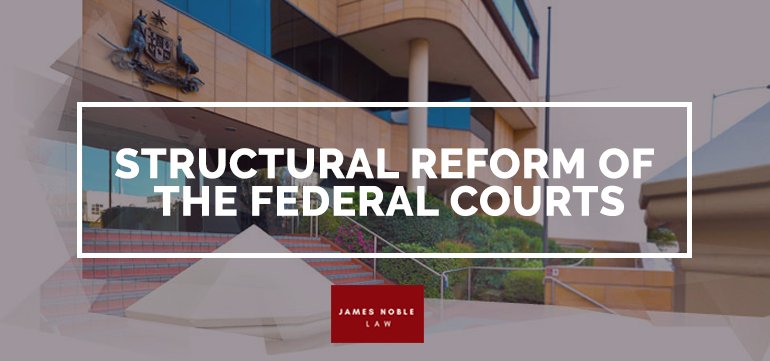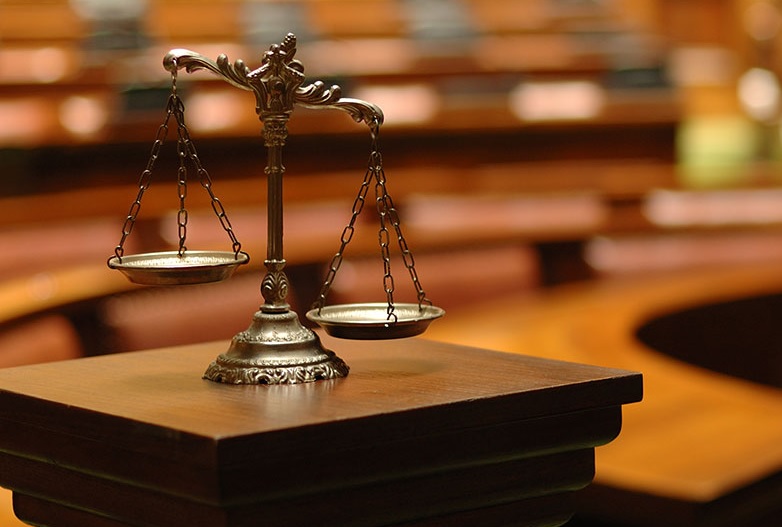
What Does Structural Reform of the Federal Court Mean To You?
 On 30 May 2018, the Government proposed to establish the new Federal Circuit and Family Court of Australia (FCFCA), amalgamating the two courts together under a new regime. In addition to this proposed structure, a new Family Law Appeal Division will be created to hear appeals from the FCFCA regarding family law matters. The implementation of the new structure commenced operation on 1 January 2019.
On 30 May 2018, the Government proposed to establish the new Federal Circuit and Family Court of Australia (FCFCA), amalgamating the two courts together under a new regime. In addition to this proposed structure, a new Family Law Appeal Division will be created to hear appeals from the FCFCA regarding family law matters. The implementation of the new structure commenced operation on 1 January 2019.
There will now be a single point of entry for family law matters, being through the FCFCA. The current court structure has been debilitated with overlapping jurisdictional matters, backlogs of case hearings, and significant inefficiencies through delays, costs, and overall experiences by parties to the litigation. The proposed reform will address these issues by establishing a new streamlined court system, enabling Australian families to have their matters dealt with in a timely manner and receive more consistent resolutions.
The structure of the FCFCA is divided into two divisions. The first will comprise existing judges of the Family court, whilst the second will comprise existing judges of the Federal Circuit Court. Division 1 will deal exclusively with family law matters. Division 2 will deal with both family law matters and federal law matters. No further judge appointments will occur in Division 1, meaning when those judges who are currently appointed in Division 1 retire, this division will cease to exist. In regard to federal law matters, the process of appeal will not be affected by the new FCFCA structure.
Practical Effects of Merge Federal Court
 The new FCFCA will create a single point of entry into the court system for family law matters. The principle of prioritizing urgent and high-risk cases will continue to be adhered to, with all other cases being allocated to a relevant judge and division at the earliest possible date.
The new FCFCA will create a single point of entry into the court system for family law matters. The principle of prioritizing urgent and high-risk cases will continue to be adhered to, with all other cases being allocated to a relevant judge and division at the earliest possible date.
To assists in making the new structure efficient, the FCFCA will operate under the leadership of the Chief Justice Australia and the Deputy Chief Justice. This proposed formula ensures allocation of matters will be handled via the common case management process. By adopting this process, parties to a dispute can be assured the matter is being dealt with consistently. Furthermore, litigants will have an increased experience with the court system and parties will be able to grasp the cost implications of lodging a family law initiating an application.
The change to appeals under the FCFCA will remove the predominant part of the appellate jurisdiction of the Family Court. The aim of this proposal will be to divert judicial resources from the appeal section to focus on alleviating the backlog of first instance family law matters. As a result, party dispute waiting times will be standardised with the court being able to hear more cases on average per year.
Although the FCFCA will retain jurisdiction to hear appeals from State/Territory court summary jurisdiction, the creation of the new appellate jurisdiction will extend to both division 1 and 2 of the FCFCA. The current rights to appeal provided for under the Family Law Act 1975 (Cth) will not be affected.
Statistics Supporting Reform
 In the last five years, the family law cases before the Family Court of Australia and the Federal Circuit Court have grown from 17,000 to 21,000. In addition to this increase, the average time of cases pending final orders has grown to over 12 months. In regard to cases awaiting trial, the median time spans between 10.8 – 15.2 months for the FCC and 11.5 – 17 months for the Family Court of Australia.
In the last five years, the family law cases before the Family Court of Australia and the Federal Circuit Court have grown from 17,000 to 21,000. In addition to this increase, the average time of cases pending final orders has grown to over 12 months. In regard to cases awaiting trial, the median time spans between 10.8 – 15.2 months for the FCC and 11.5 – 17 months for the Family Court of Australia.
In regard to appeals, only 250 have been filed each year since 2013. Although appeals can usually be heard by a single judge, over 75% of appeals to the Family Court are heard by the Full Bench of three judges. In comparison, 88% of appeals in the FCC are heard by a single judge.
The current structure of the Family Court provides families are estimated to have cost more than four times the amount of average FCC matters, litigants are required to appear in court 45% more than litigants in the FCC, and days allocated for the trial are double in the Family Court than in the FCC. In terms of unnecessary jurisdiction transfers, the average waiting time to have a case transferred between the courts is 11.1 months in the FCC and 4.6 months in the Family Court. Consequently, the 1,200 families attempting to transfer matters in 2016-17 had to essentially restart their proceedings using the alternate courts’ practice.
Watch this space
The proposed structural changes aim to improve case efficiency drastically, allowing time to hear and resolve an additional 8000 cases per year. This conclusion is broken down into a potential 3,500 cases arising from consolidating a single court entity with one point of entry, 3,000 cases from structured common case management, and 1,500 cases arising from shifting judicial resources from appeals to first instance matters.
Although the finalization of 8,000 cases may be an optimistic conclusion by the Government, these changes will hopefully reduce the growing backlog of cases under the current regime and reduce average waiting times.
To discuss your situation and the options that are available to you, contact the team at James Noble Law today for expert advice from experienced Brisbane Family Lawyer for a FREE 20-minute consultation.
We have Qualified and Experienced Family Lawyers Brisbane at James Noble Law.

You may also like to know more information about the
- Mother withholding child from father Australia.
- Parental Responsibilities and Legislation.
- The different types of Child Support Arrangements.
- Parenting Plan About Future Care Arrangements for your Children.
- Spousal maintenance qld, Brisbane, Australia.
- What is section 61da(1) | Criminal law in Family Law proceedings.
- Learn about family court portal.
- Family law brisbane solicitors.
- How to prepare family reports?
- Learn about the family Law act 1975
- Online Divorce application In Australia.
- Get in touch with brisbane family lawyers


